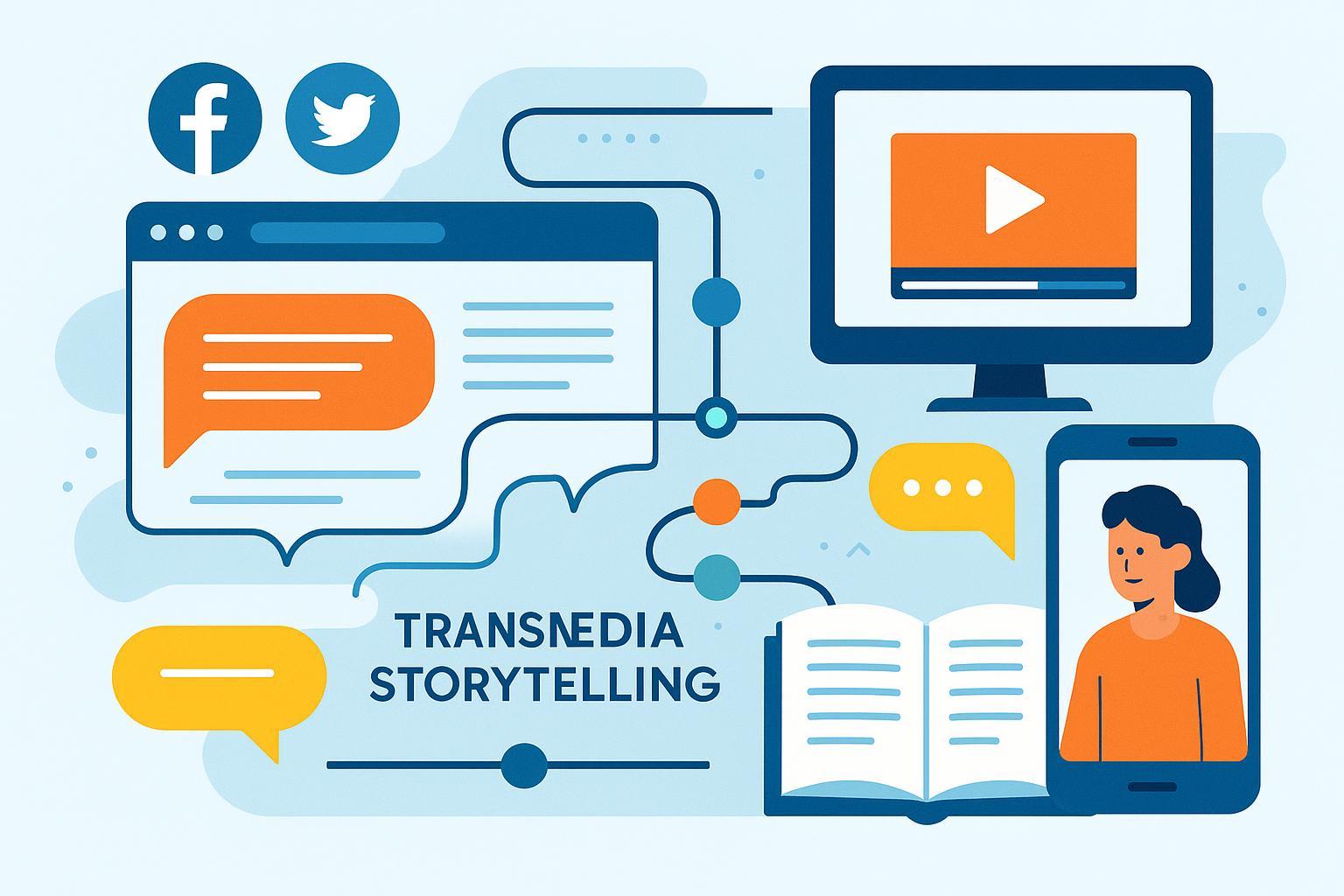What is Transmedia Storytelling? Definition & Digital Marketing Examples
Transmedia Storytelling explained: definition, key components, and real-world marketing examples. Learn how brands build engagement with narrative integration.


One-Sentence Definition
Transmedia storytelling is a narrative strategy in which a single, cohesive story unfolds across multiple media platforms—each contributing a unique, complementary part—creating an engaging, interactive experience for audiences.[^1]
In-Depth Explanation
Unlike simply sharing the same content through various channels (multi-channel marketing), transmedia storytelling crafts distinct, platform-specific story segments that build upon one another. Each channel—be it social media, videos, blogs, podcasts, apps, or events—delivers a piece of the larger narrative, encouraging audience participation and deeper engagement. This approach goes beyond information repetition; it invites audiences to explore, interact, and even influence the evolving brand story.[^1][^2]
Academic Henry Jenkins, who popularized the concept, emphasizes that the power of transmedia lies in its ability to disperse narrative elements strategically, so that audiences must piece together the full story by engaging across platforms.[^1] In marketing, this method fosters brand loyalty, fuels conversation, and transforms passive consumers into active participants.
Key Components of Transmedia Storytelling
- Narrative Integration: Every platform supplies a unique story element, weaving a larger, coherent narrative web
- Platform-Native Content: Stories are adapted to fit the strengths and audience expectations of each media type (e.g., visual storytelling on Instagram, behind-the-scenes on YouTube)
- Audience Engagement: Followers can participate in the narrative, contribute content, or unlock new storylines through interaction
- World-Building: The brand or campaign becomes an immersive world, often with multiple entry points for different audiences
- Coordinated Release and Timing: Planning when and where each story piece appears is crucial for sustained momentum and engagement
Practical Applications: Real-World Marketing Case Studies
- Coca-Cola “Happiness Factory”: The animated commercial introduced a magical world, expanded via online mini-games, behind-the-scenes documentaries, and live experiential events. Each platform revealed new layers of Coca-Cola’s core happiness story, driving audience curiosity and brand association.
- Red Bull Stratos: Red Bull turned Felix Baumgartner’s space jump into a global transmedia event, orchestrating live YouTube streams, exclusive behind-the-scenes content, social media challenges, and traditional media partnerships. This campaign captivated audiences worldwide and showcased Red Bull’s ethos of pushing boundaries.[^3]
- Nike “Dream Crazy”: Leveraged broadcast ads, athlete-driven Instagram stories, hashtag campaigns, and interactive web features to create an inspiring, evolving brand story about overcoming adversity.
These examples highlight how transmedia storytelling turns campaigns into living ecosystems, inviting active discovery and participation across platforms—a powerful driver of attention, recall, and advocacy in modern marketing.
Comparison Table: Transmedia vs. Multichannel vs. Omnichannel
| Strategy | Content Approach | Story Integration | Audience Role | Main Goal |
|---|---|---|---|---|
| Transmedia Storytelling | Unique story element per platform | Cohesive & layered | Active participation | Deep narrative engagement |
| Multichannel Marketing | Same content across platforms | Low | Passive consumption | Broad reach |
| Omnichannel Marketing | Unified customer experience | Low to moderate | Seamless transition | Convenience & consistency |
Related and Contrasting Concepts
- Cross-platform Storytelling: Uses different platforms but may lack integrated, interdependent storylines
- Content Marketing: Focuses on valuable, relevant content but doesn’t always require cross-platform narrative interplay
- Brand Narrative: The overarching story a brand tells—a foundation for transmedia initiatives
- Audience Participation: The act of users shaping or sharing in the brand’s narrative, fundamental to true transmedia
- Omnichannel Marketing: Prioritizes seamless experiences across touchpoints, not necessarily linked by a common narrative
Further Reading & References
- Transmedia Storytelling Research Starter, EBSCO
- Dream Farm Studios: What is Transmedia Storytelling?
- Number Analytics: Transmedia Storytelling 101
- Red Bull Stratos Campaign Breakdown
[^1]: EBSCO, Transmedia Storytelling Research Starter [^2]: Dream Farm Studios [^3]: Red Bull Stratos Campaign Breakdown





